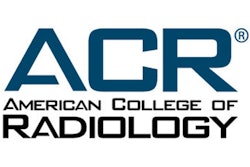
On November 2, the U.S. Centers for Medicare and Medicaid Services (CMS) released its final 2017 Medicare Physician Fee Schedule (MPFS) rule -- and for once there's some good news for radiology.
Like what? For starters, payment reductions for interventional radiology services won't be as steep as the proposed rule suggested, and the multiple procedure payment reduction (MPPR) to professional component payments will remain at the congressionally mandated 5%, according to the American College of Radiology (ACR).
"Although our staff is still reviewing the rule, there are several major successes here," said Kathryn Keysor, ACR's director of economics and health policy.
Overall impact
The agency estimated that the 2017 conversion factor will be $35.88, which reflects the 0.5% update specified by the Medicare Access and CHIP Reauthorization Act (MACRA) and is a slight increase from the current conversion factor of $35.80. The overall impact of the MPFS to radiology will be a 1% decrease in payments, with interventional radiology taking a 1% decrease and radiation oncology and nuclear medicine taking none.
This 1% decrease in interventional radiology is a victory, the ACR noted in a statement.
In July, "the proposed rule included an estimated 7% reduction in reimbursement for interventional radiology services," the ACR said. "These proposed cuts were largely mitigated as a result of detailed comments [the ACR] provided to CMS on the valuation of new and revised interventional radiology current procedural terminology (CPT) codes. CMS increased the relative value units (RVUs) for these codes in response to the comments."
Clinical decision support
In 2016, CMS announced that implementation of its clinical decision-support (CDS)/appropriate use criteria (AUC) program would be delayed, but it did not specify for how long. This rule clarifies that the program will begin on January 1, 2018.
"The ACR is pleased that CMS has indicated [when] implementation is expected to occur ... and that it will apply to orders for all advanced diagnostic imaging services, not limited to priority clinical areas," the ACR said in its statement.
The agency also clarified how CDS/AUC data should be reported. It has also created a Clinical Decision Support Mechanism (CDSM), "an interactive, electronic tool for use by clinicians that communicates AUC information to the user and assists them in making the most appropriate treatment decision for a patient's specific clinical condition."
CMS will begin to accept applications from developers of CDSM software right away, with a deadline of March 1, 2017. Qualified CDSMs will be announced by June 30 of next year.
Mammography updates
In its proposed rule, CMS said it would implement three new mammography codes that would bundle mammography with computer-aided detection (CAD). In the final rule, CMS said Medicare processing problems would prevent it from processing claims using these new codes; instead, it will continue to use existing G-codes (G0202, G0204, and G0206) and plans to adopt the new codes in 2018.
The agency also accepted the Relative Value Scale Update Committee (RUC) recommendation regarding the new codes, which will mean a payment increase for both diagnostic mammography codes. The current value for screening mammography will remain the same.
CMS also said it will not make changes to the technical component reimbursement value for mammography with CAD, since doing this could dramatically reduce practice expense relative value units.
Last roundup
This final rule also addresses a number of smaller but significant issues, the ACR said. It sets the price for professional PACS workstations at $14,617 and technologist PACS workstations at $5,557. It upholds the mandate set forth by the Consolidated Appropriations Act of 2016 (HR 2029) regarding the multiple procedure payment reduction, which lowers the existing 25% professional component MPPR to 5%, effective 2017.
This rule also confirms that any RVU codes that are to be reduced by more than 20% will have a phased-in reduction, starting with 19% the first year, with the remaining reduction taken the following year. For example, a code facing a 50% reduction would be limited to a decrease of 19% in total each year, the ACR said.
Finally, the rule also upholds provisions in HR 2029 that outlined a series of payment reductions for both analog x-ray and computed radiography (CR). Reimbursements for film x-rays will be reduced by 20% beginning in 2017 and will continue at that rate in subsequent years. CR payments will be reduced by 7% between 2018 and 2022, followed by a 10% percent reduction in 2023 and all subsequent years, the agency said. CMS has proposed to create a new modifier, "FX," to be used on relevant claims.
Not bad?
Overall, this MPFS isn't bad, Keysor concluded.
"On initial review, the ACR is pleased with the final rule, especially the direction CMS is going with implementation of clinical decision support and the increase in RVUs for some interventional radiology codes," she told AuntMinnie.com.



















